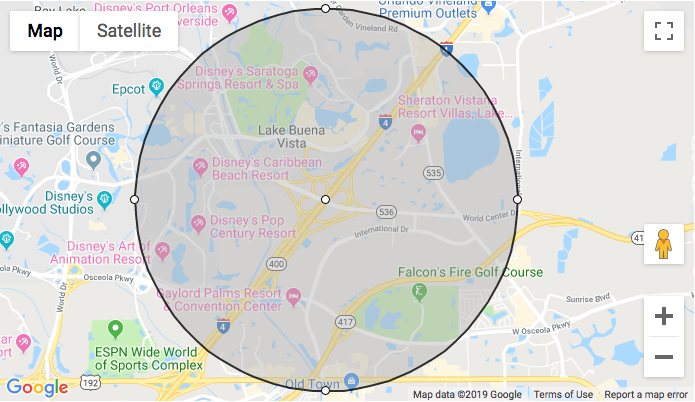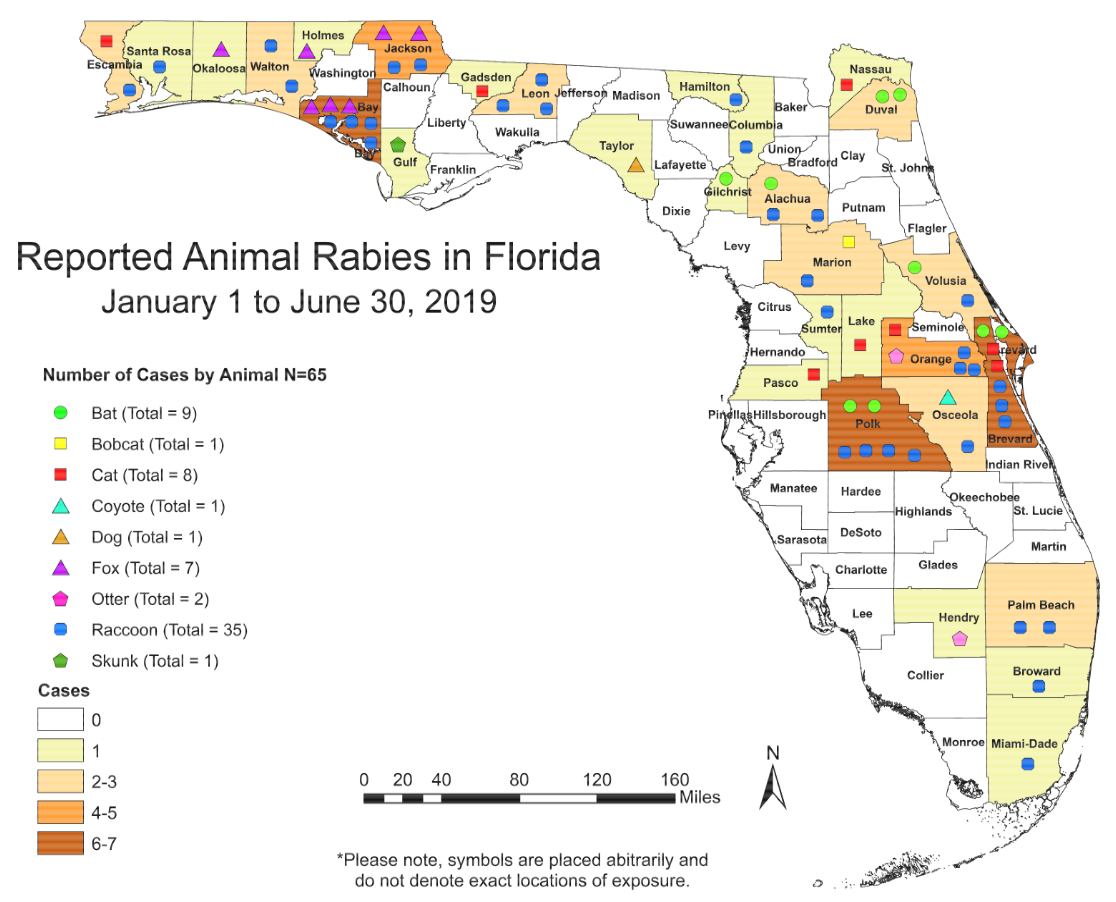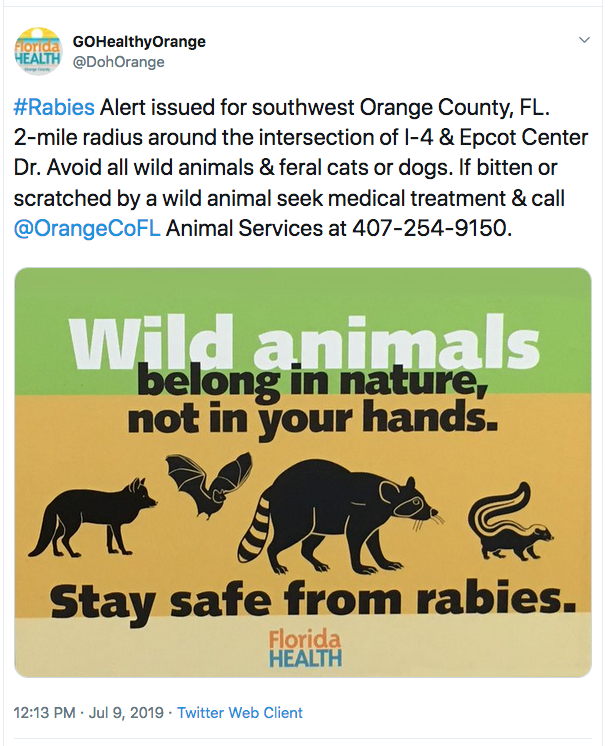Earlier this month, the Florida Department of Health in Orlando County issued a 60-day rabies alert after a feral cat scratched two Walt Disney World cast members. Happily, the two CMs were not infected and are back to work. The cat was found in the parking lot of an office building outside the park and was put down.
The alert is for a 2-mile radius around the intersection of I-4 and Epcot Center Dr. (a.k.a. Rt. 536):

This means a significant chunk of the Walt Disney World (WDW) complex is affected, including a portion of Epcot, as well as virtually all of Disney Springs, Typhoon Lagoon, and Disney’s Sarasota Springs, Old Key West, Port Orleans, Caribbean Beach, Art of Animation and Pop Century Resorts.
Outside WDW property, multiple hotels, strip malls, apartment complexes and other “real life” standalone buildings and public/private spaces, including a Disney cast member housing complex, are under the alert.
So how does this affect you and your safety when visiting Central Florida?
As per the Centers for Disease Control and prevention, “Rabies is a fatal but preventable viral disease. It can spread to people and pets if they are bitten or scratched by a rabid animal. In the United States, rabies is mostly found in wild animals like bats, raccoons, skunks, and foxes.”
And apparently cats.
Now, this is no surprise. Central Florida (well, all of Florida, actually) still has a LOT of undeveloped land, so there are a lot of wild animals, as well as feral cats and stray dogs out there. So all it takes is a bite (or sometimes a scratch) for the disease to be spread from animal to animal. And as you can see, it happens quite a bit – the Florida Department of Health posts a biannual map of reported animal rabies in the state. Here’s the one from January 1 to June 30, 2019:

PC: FL DOH // For reference, most Central FL attractions are in Orange and/or Osceola counties, and Legoland is in Polk county.
In fact, there’s also currently a 60-day rabies alert in Altamonte Springs (a town about 25 miles NNE of WDW) that was issued in mid-July, and another one in St. Cloud (about 20 miles SE of WDW) that was issued in June. Earlier in the year, there were two rabies alerts that were issued in Winter Park (about 22 miles NE of WDW) this past March, as well as one in Kissimmee (the southwestern part of WDW is in Kissimmee) in January.
How can you stay safe?
Disney property has its fair share of wild animals on property, and many WDW guests will tell you that they’ve seen feral cats and/or wild deer, rabbits, turkeys, raccoons, squirrels and bald eagles, as well as wild armadillos, snakes, otters, alligators, bats, turtles and pigs (no, really!) on property. Plus, of course, there are all kinds of wild birds on property.
Not necessarily sighted at WDW, but coyotes and black bears have been occasionally problematic in Central Florida, so it wouldn’t be too crazy if one was seen on property (in fact, a rabid coyote was the cause of the aforementioned rabies alert in Kissimmee).
The American Humane Society suggests the following to help avoid getting rabies:
- Avoid direct contact with wildlife, dead or alive. Never touch any wildlife with your bare hands.
- Avoid animals displaying unnatural behavior. Wild animals that are unusually friendly or displaying other unnatural behaviors may have the rabies virus.
- Report all stray animals to animal control (well, in this case, to a Disney CM). Stray animals may not be vaccinated for rabies. They also run a high risk of exposure to wild animals who carry the disease.
- Give your child some guidelines to follow. Do not frighten young children, but make sure they learn some basic rules about protecting themselves from strange or unfamiliar animals.
There are other guidelines too, but I just culled out the ones that would be of special attention to people visiting theme parks. Go to the bottom of this page to see them all.
Fortunately, the chances of being bitten by a rabid animal, especially in a Central Florida theme park, is pretty small. And gets even smaller if you follow the AHS’s suggestions of how to avoid getting the disease.
Like this post? Please share it! We have plenty more just like it and would love if you decided to hang around and clicked the button on the top (if you’re on your computer) or the bottom (if you’re on your phone/tablet) of this page to follow our blog and get emailed notifications of when we post (it’s usually just two or three times a day). Or maybe you’d like to join our Facebook group, where we talk and ask questions about travel (including Disney parks), creative ways to earn frequent flyer miles and hotel points, how to save money on or for your trips, get access to travel articles you may not see otherwise, etc. Whether you’ve read our posts before or this is the first time you’re stopping by, we’re really glad you’re here and hope you come back to visit again!
This post first appeared on Your Mileage May Vary


1 comment
you had an earlier article about a young woman who got rabies from a playful stray puppy. That would have been useful information here to help people realize how easy it is to get rabies!